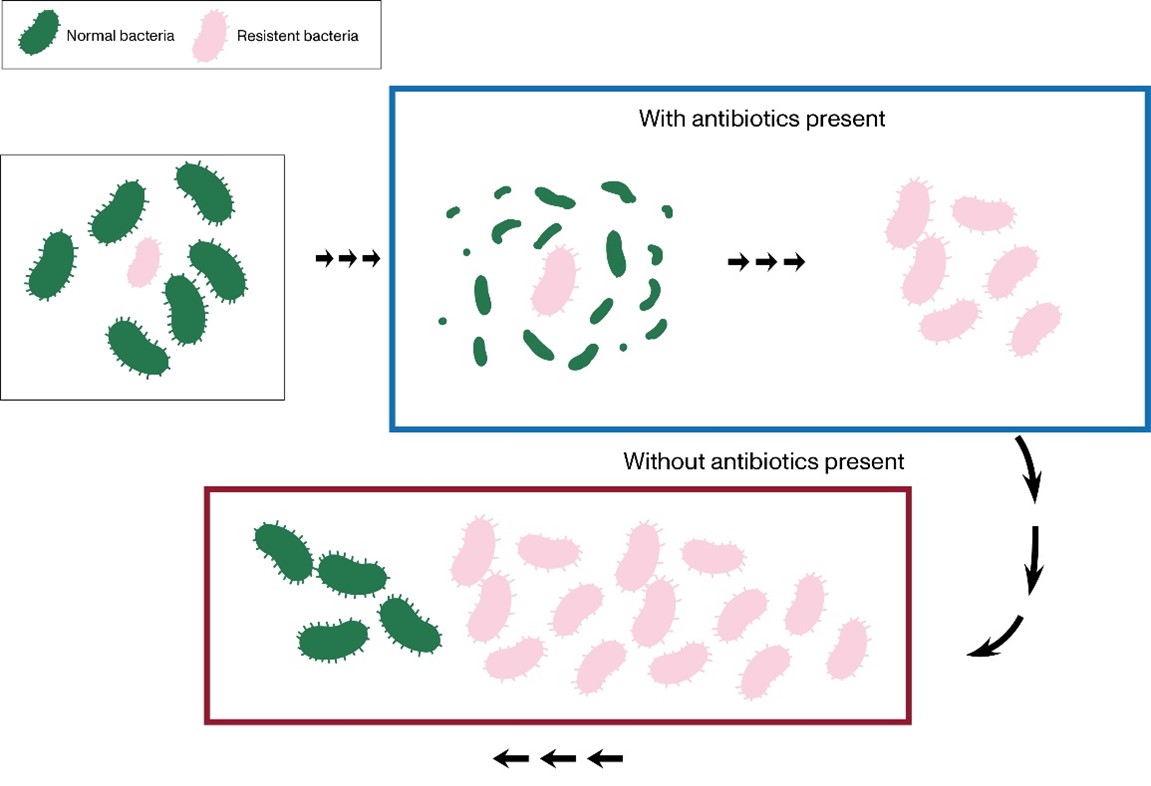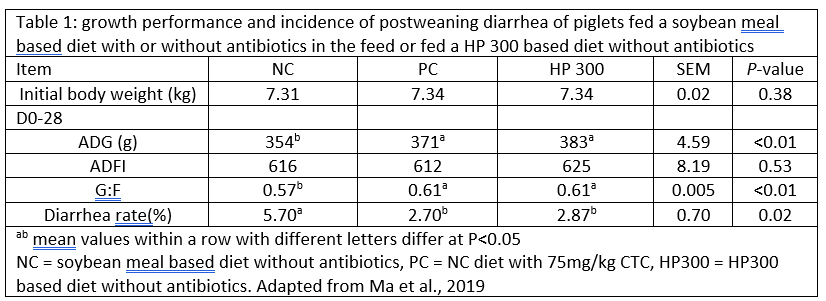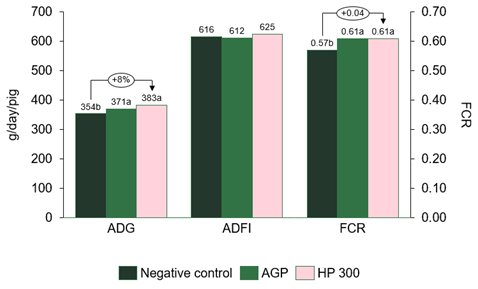Reducing the use of antibiotics in weaned piglets; what does dietary protein have to do with it?
By Jessika van Leeuwen PhD MSc – Global Category Manager Swine at Hamlet Protein
Increasing awareness about the risk of antibiotic resistance threatening human health has led to the ban of antibiotic growth promoters (AGP) in animal feed in the European Union and to a more responsible use in many other countries. Removal of antibiotics from feed effectively reduces on-farm antibiotic resistance, but negatively affects the incidence of enteric diseases, which then increases the need for therapeutic antibiotics. This article aims at describing how quality of dietary protein can play a role to reduce the need for antimicrobials used on farm to cure enteric diseases.
Over the past decades the animal feed industry has been using different techniques to improve the digestibility of the feed ingredients to maintain feed costs affordable for meat producers. Feed cost is without a doubt the biggest contribution to total production costs. One of the most successful techniques to keep digestibility and feed efficiency has been the use of antibiotic growth promoters (AGP). When these antibiotics are mixed at subtherapeutic inclusion levels with the feed, animal performance improves resulting in better feed efficiency and overall health. The mode of action of subtherapeutic antimicrobials to improve growth is not completely understood (Kim et al., 2012). Potential mechanisms include: (1) reduction of bacteria that compete with the host animal for nutrients; (2) reduction of the inflammatory response (Niewold 2007) and (3) modulation of metabolic activity or shifting the balance to a more beneficial microbial population (McEwen and Fedorka-Cray, 2002; Kim et al., 2012; Looft et al.,2012).
The use of AGP has led to increased antibiotic resistance on farms
The fact that AGP have been used at such enormous scale and at subtherapeutic levels has led to the development of antibiotic resistance on farm (Doyle and Erickson, 2006), which reduces feed efficiency through decreased sensitivity to the antibiotic. This may also pose a threat for human health as antibiotic resistance may be passed on in the food chain. This is not unique to farming; wherever antimicrobials are used, some resistant bacteria can survive and multiply and eventually, they will spread their resistance genes (Dewulf, 2018). Antimicrobial resistance can be developed by any bacteria, including pathogens and commensal flora. It is unclear how much the use of AGP in animal feed contributes to antibiotic resistance in bacteria causing health problems in humans, but it is a fact that antibiotic resistance is high among bacteria causing health problems in swine. A recent study from EFSA showed that over 66% of all the E. coli and B. hyodysenteriae samples taken from swine farms in the EU were resistant to 1 or more antibiotic(s). However, carrying extra resistance ‘genes’ comes with a metabolic cost for the bacteria, so the good news is that it can also disappear (Dewulf, 2018). In absence of the antibiotic the ones not carrying the resistance in the genetic code have an advantage over their resistant peers and so the resistance can disappear over time.

Illustration of the fitness cost where susceptible bacteria are killed by antibiotics and a few resistant bacteria survive and become dominant. In absence of the antibiotic however the susceptible bacteria gradually return as they have the advantage of not having to support the resistance genes; the fitness cost. Figure adapted from Dewulf, 2018.
The challenge when removing AGP
Removal of AGP from feed indeed reduces the occurrence of on-farm resistance but has led to a high variation in performance with some reporting no detrimental effect (Emborg et al., 2001) while others showed reduced performance after AGP removal increasing the production cost (McEwen and Fedorka-Cray, 2002). As a result of AGP removal enteric diseases like E coli or Lawsonia Intracellularis infections have become more prevalent. Also, the risk of (antibiotic resistant) zoonoses has increased as Salmonella and Campylobacter prevalence also increased (Hao et al., 2014). Therefore, it is not only important to reduce antibiotic resistance to keep good animal performance but also because it poses a threat to human health. To be able to do this well there is something important to consider: there is no magic bullet that replaces AGP; the most successful approach is a holistic one where farm management, biosecurity, vaccination, data analysis and quality of dietary ingredients become increasingly more important (Rostagno 2017).
High levels of antinutritional factors contribute to the use of antibiotics
The industry has presented different solutions to reduce enteric bacterial infections. Most solutions are based upon an on top inclusion in the diet (feed additives) and focus on either having antimicrobial effect (organic acids), anti-inflammatory effect (phytogenic compounds) or a combination of both (so-called black box feed additives with multiple ingredients).
However, mostly these additives are used to ‘cover up’ mistakes in management, (feed)hygiene or formulation and aim at reducing the pathogenic threat and reduce the inflammatory response as result of exposure to pathogens or low-quality diets.
Low quality diets can provoke intestinal inflammation as they contain protein sources with high levels of so-called antinutritional factors (ANF’s). ANF’s cover a range of substances that provide plants important protection against mold, bacteria, and over-consumption by wild animals. Especially soy (the protein source for most animal diets due to its unique amino acid profile) has high ANF’s levels. While being beneficial for the plant, in the gut and especially the gut of young animals, ANF’s reduce the digestibility of the diet, irritate the gut lining, and so facilitate the (over) growth of pathogenic bacteria. This results in poor animal performance and higher prevalence of post weaning diarrhoea. So, when in response the symptoms (diarrhea) are treated instead of removing the cause (ANF’s), the consequence is an increased need for gut health improving feed additives or antibiotics.
Using premium quality protein to ensure intestinal health and optimize performance
At Hamlet Protein we believe it is important to start with the best quality protein available for piglets to preserve intestinal health and to ensure optimal protein availability for the fast-growing organs and muscles. We have made it our core-business to produce safe, premium quality soy protein for young animals by identifying ANF’s which are most critical to the health and gut development of piglets. Our production process is designed to inactivate these ANF’s gently and effectively to optimize the availability of the essential amino acids in our specialty soy proteins. As a result, our customers have healthy and resilient piglets with less need of antibiotic treatment when using for instance HP 300 as main protein source.
.


Ma et al. (2019) showed that when soybean meal is replaced by HP 300 in nursery diets growth performance significantly improves (Table 1 + Figure 1). As a matter of fact, their results indicate that replacing soybean meal by HP 300 was as effective as adding AGP to the soybean meal diet (Table 1+ Figure 1). Interestingly their findings also showed that the incidence of diarrhea was reduced by half when soybean meal was replaced by HP 300 (Table 1). As a lower incidence of diarrhea also means fewer animals that get sick, this contributes to the aim of overall reduction of on farm antibiotic usage to reduce the spread of antibiotic resistance from livestock to humans.
So, in conclusion, as antibiotic resistance is becoming of increasing concern for human health it is important to address this subject also from within the animal feed business. Even though the exact contribution of antibiotic resistance in farm animals to antibiotic resistance in human medicine is unclear it must be acknowledged that there is overlap. We should therefore make an effort to reduce the need for antimicrobials on farm using diets which are well digestible and low in ant-nutritional factors to decrease intestinal distress in weaned piglets. The quality of dietary proteins therefore plays a crucial role in improving animal health and performance after weaning.
References
Dewulf J., 2018. Eight myths on antibiotic resistance disproved. ISBN978-90-90-30951-4
Doyle & Erickson, 2006. Reducing the carriage of foodborne pathogens in livestock and poultry. Poult. Sci. 85, 960–973
Emborg et al., 2001. The effect of discontinuing the use of antimicrobial growth promoters on the productivity in the Danish broiler production. Prev. Vet. Med. 50, 53–70.
Hao et al., 2014. Benefits and risks of antimicrobial use in food-producing animals. Frontiers in microbiology 5(288), 1-11.
Kim et al., 2012. Microbial shifts in the swine distal gut in response to the treatment with antimicrobial growth promoter, tylosin. Proc. Natl. Acad. Sci. U.S.A. 109, 15485–15490.
Looft et al., 2012. In-feed antibiotic effects on the swine intestinal microbiome. Proc. Natl. Acad. Sci. U.S.A. 109, 1691–1696.
Ma et al., 2019. Comparative effects of enzymolytic soybean meal and antibiotics in
diets on growth performance, antioxidant capacity, immunity, and intestinal barrier function in weaned pigs. J Animal Feed Science and Technology 248 47-58
McEwen & Fedorka-Cray, 2002. Antimicrobial use and resistance in animals. Clin. Infect. Dis. 34 Suppl 3, 93–106.
Niewold T., 2007. The nonantibiotics Anti-inflammatory effect of antimicrobial growth promoters, the real mode of action? A Hypothesis. Poultry Science 86:605-609
Rostagno M 2017. GITEP Congress Rosario Argentina
Events with Hamlet Protein
We attend events around the world. Meet us at exhibitions and seminars - we always look forward to welcoming you!
We also sponsor conferences with focus on young animal nutrition.
Have a look below where to meet us next.


